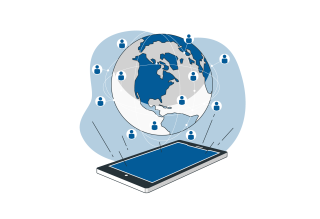- Our Story
- Publications & Resources
- Publications & Resources
- Publications
- IEEE Signal Processing Magazine
- IEEE Journal of Selected Topics in Signal Processing
- IEEE Signal Processing Letters
- IEEE Transactions on Computational Imaging
- IEEE Transactions on Image Processing
- IEEE Transactions on Information Forensics and Security
- IEEE Transactions on Multimedia
- IEEE Transactions on Signal and Information Processing over Networks
- IEEE Transactions on Signal Processing
- IEEE TCI
- IEEE TSIPN
- Data & Challenges
- Submit Manuscript
- Guidelines
- Information for Authors
- Special Issue Deadlines
- Overview Articles
- Top Accessed Articles
- SPS Newsletter
- SigPort
- SPS Resource Center
- Publications FAQ
- Blog
- News
- Dataset Papers
- Conferences & Events
- Community & Involvement
- Professional Development
- For Volunteers
- Information for Authors-OJSP
-
Home
Conferences Events IEEE Signal Processing Magazine IEEE SPL Article IEEE TIFS Article IEEE TMM Article IEEE TSP Article Jobs in Signal Processing Lectures Machine Learning Seasonal Schools Signal Processing News SPM Article SPS Distinguished Lectures SPS Newsletter Article SPS Webinar SPS Webinars SPS Webinar Series Webinar webinars
-
Our Story
What is Signal Processing?

The technology we use, and even rely on, in our everyday lives –computers, radios, video, cell phones – is enabled by signal processing. Learn More » -
Publications & Resources
-
SPS Resources
- Signal Processing Magazine The premier publication of the society.
- SPS Newsletter Monthly updates in Signal Processing
- SPS Resource Center Online library of tutorials, lectures, and presentations.
- SigPort Online repository for reports, papers, and more.
- SPS Feed The latest news, events, and more from the world of Signal Processing.
-
SPS Resources
-
Conferences & Events
-
Community & Involvement
-
Membership
- Join SPS The IEEE Signal Processing Magazine, Conference, Discounts, Awards, Collaborations, and more!
- Chapter Locator Find your local chapter and connect with fellow industry professionals, academics and students
- Women in Signal Processing Networking and engagement opportunities for women across signal processing disciplines
- Students Scholarships, conference discounts, travel grants, SP Cup, VIP Cup, 5-MICC
- Young Professionals Career development opportunities, networking
- Get Involved
-
Technical Committees
- Applied Signal Processing Systems
- Audio and Acoustic Signal Processing
- Bio Imaging and Signal Processing
- Computational Imaging
- Image Video and Multidimensional Signal Processing
- Information Forensics and Security
- Machine Learning for Signal Processing
- Multimedia Signal Processing
- Sensor Array and Multichannel
- Signal Processing for Communication and Networking
- Signal Processing Theory and Methods
- Speech and Language Processing
- Technical Working Groups
- More TC Resources
-
Membership
-
Professional Development
-
Professional Development
- Signal Processing Mentorship Academy (SigMA) Program
- Micro Mentoring Experience Program (MiME)
- Distinguished Lecturer Program
- Distinguished Lecturers
- Distinguished Lecturer Nominations
- Past Lecturers
- Distinguished Industry Speaker Program
- Distinguished Industry Speakers
- Distinguished Industry Speaker Nominations
- Industry Resources
- IEEE Training Materials
- Jobs in Signal Processing: IEEE Job Site
-
Career Resources
- SPS Education Program Educational content in signal processing and related fields.
- Distinguished Lecturer Program Chapters have access to educators and authors in the fields of Signal Processing
- Job Opportunities Signal Processing and Technical Committee specific job opportunities
- Job Submission Form Employers may submit opportunities in the area of Signal Processing.
-
Professional Development
-
For Volunteers
-
For Board & Committee Members
- Board Agenda/Minutes* Agendas, minutes and supporting documentation for Board and Committee Members
- SPS Directory* Directory of volunteers, society and division directory for Board and Committee Members.
- Membership Development Reports* Insight into the Society’s month-over-month and year-over-year growths and declines for Board and Committee Members
-
For Board & Committee Members
Popular Pages
Today's:
- Information for Authors
- (ICME 2026) 2026 IEEE International Conference on Multimedia and Expo
- IEEE Transactions on Information Forensics and Security
- IEEE Transactions on Image Processing
- IEEE Transactions on Multimedia
- Information for Authors-SPL
- Conference Call for Papers
- 2025 IEEE SPS Chapter Initiative: SPECTRE (Signal Processing Expo and Creatathon for Technical Research and Excellence)
- Submit a Manuscript
- IEEE Transactions on Signal Processing
- Editorial Board
- Signal Processing Cup
- 2025 IEEE SPS Chapter Initiative: S.P.A.R.C. – Signal Processing, AI & Real-time Computing Camp
- IEEE Signal Processing Letters
- Unified EDICS
All time:
- Information for Authors
- Submit a Manuscript
- IEEE Transactions on Image Processing
- IEEE Transactions on Information Forensics and Security
- IEEE Transactions on Multimedia
- IEEE Transactions on Audio, Speech and Language Processing
- IEEE Signal Processing Letters
- IEEE Transactions on Signal Processing
- Conferences & Events
- IEEE Journal of Selected Topics in Signal Processing
- Information for Authors-SPL
- Conference Call for Papers
- Signal Processing 101
- IEEE Signal Processing Magazine
- Guidelines
Last viewed:
- Indraprastha Institute of Info Tech Delhi Student Branch Chapter
- Researchers use solar cells to achieve fast underwater wireless communication
- Senior Algorithm Engineer
- SPS Education
- Governance Documents
- Conference Call for Papers
- IEEE Transactions on Information Forensics and Security
- Signal Processing Cup
- IEEE Transactions on Image Processing
- 2025 CI TC Call for Nominations for New Members: Term 2026-2028
- Micro Mentoring Experience Program
- (ICME 2026) 2026 IEEE International Conference on Multimedia and Expo
- Webinars and Blog Posts in the Field of Signal Processing: September 2024
- Publications
- IEEE Transactions on Signal Processing
Newsletter Menu
Newsletter Categories
Top Reasons to Join SPS Today!
1. IEEE Signal Processing Magazine
2. Signal Processing Digital Library*
3. Inside Signal Processing Newsletter
4. SPS Resource Center
5. Career advancement & recognition
6. Discounts on conferences and publications
7. Professional networking
8. Communities for students, young professionals, and women
9. Volunteer opportunities
10. Coming soon! PDH/CEU credits
Click here to learn more.
News and Resources for Members of the IEEE Signal Processing Society
Play CSI with the IEEE SPS IFS TC

Call for Challengers
Digital images are everywhere. However, the way people deal with digital images may raise several legal and ethical issues that need to be addressed. Before legal action can be taken based on an image, whose content truthfulness may be questionable, it is necessary to provide some forensic evidence about the image itself.
In the last years, the field of Digital Image Forensics has emerged with several tools and algorithms presented to help researchers and forensics experts to assess the authenticity of digital documents. However, the lack of a clear benchmark and an established comparison protocol resulted in the absence of evaluation of such algorithms under real-world conditions.
In this context, the IEEE Information Forensics and Security Technical Committee (IFS-TC) launched the First IFS-TC Image Forensics Challenge, a detection and localization forensics contest, open to students, researchers and practitioners interested in role-playing a forensic analyst.
Aims
With this challenge, the IFS-TC has three major objectives in mind:
- Providing the community an open data set and protocol to evaluate the latest image forensic techniques;
- Benchmarking the current state-of-the-art techniques with respect to their ability to detect image forgeries (content manipulation);
- Establishing a standard protocol as a common comparison ground truth for new techniques.
Rules
The First IFS-TC Image Forensics Challenge will happen in two phases.
Phase 1 (tampering detection): All competing challengers submit a binary answer for each test image (0 for "pristine/non-manipulated" and 1 for "fake").
Phase 2 (tampering localization): All competing challengers submit a binary map file for each test image (white for "pristine/non-manipulated", black for "fake" pixels). The objective here is to evaluate how good are current techniques at localizing possible manipulations given a manipulated image. Only test fake images will be evaluated.
Challenge Corpus
Several original images of various scenes, both indoor and outdoor, were taken with different digital cameras. The corpus is then partitioned into images referred to as "pristine" (non-manipulated) on one hand, and "forged" or "fakes" on the other hand. "Forged" images are obtained using a set of different manipulation techniques such as copy/pasting and splicing with
different degrees of photorealism.
A training set will be made available with the associated ground truth so that the challengers can tune their algorithms. The challenge will then be run with a disjoint testing set for evaluation.
Awards
The Winner and Runner-Up of each phase will receive certificates and financial grants (at least $1k) to attend WIFS’13 in Guangzhou, China.
Email contact: ifc@ic.unicamp.br
Open Calls
| Nomination/Position | Deadline |
|---|---|
| Call for Nominations for the SPS Chapter of the Year Award | 15 October 2025 |
| Call for Papers for 2026 LRAC Workshop | 22 October 2025 |
| Submit Your 2026 ICASSP Workshop Paper | 22 October 2025 |
| Submit a Proposal for ICASSP 2030 | 31 October 2025 |
| Call for Project Proposals: IEEE SPS SigMA Program - Signal Processing Mentorship Academy | 2 November 2025 |
| Submit Your Proposals for 2026 Member-Driven Initiatives | 21 November 2025 |
| IEEE Signal Processing Society Annual Election Opens on 17 October | 4 December 2025 |
Society News
PhD Theses
New Books
Research Opportunities
Technical Committee News
Education & Resources
SPS Social Media
- IEEE SPS Facebook Page https://www.facebook.com/ieeeSPS
- IEEE SPS X Page https://x.com/IEEEsps
- IEEE SPS Instagram Page https://www.instagram.com/ieeesps/?hl=en
- IEEE SPS LinkedIn Page https://www.linkedin.com/company/ieeesps/
- IEEE SPS YouTube Channel https://www.youtube.com/ieeeSPS
Home | Sitemap | Contact | Accessibility | Nondiscrimination Policy | IEEE Ethics Reporting | IEEE Privacy Policy | Terms | Feedback
© Copyright 2025 IEEE - All rights reserved. Use of this website signifies your agreement to the IEEE Terms and Conditions.
A public charity, IEEE is the world's largest technical professional organization dedicated to advancing technology for the benefit of humanity.







